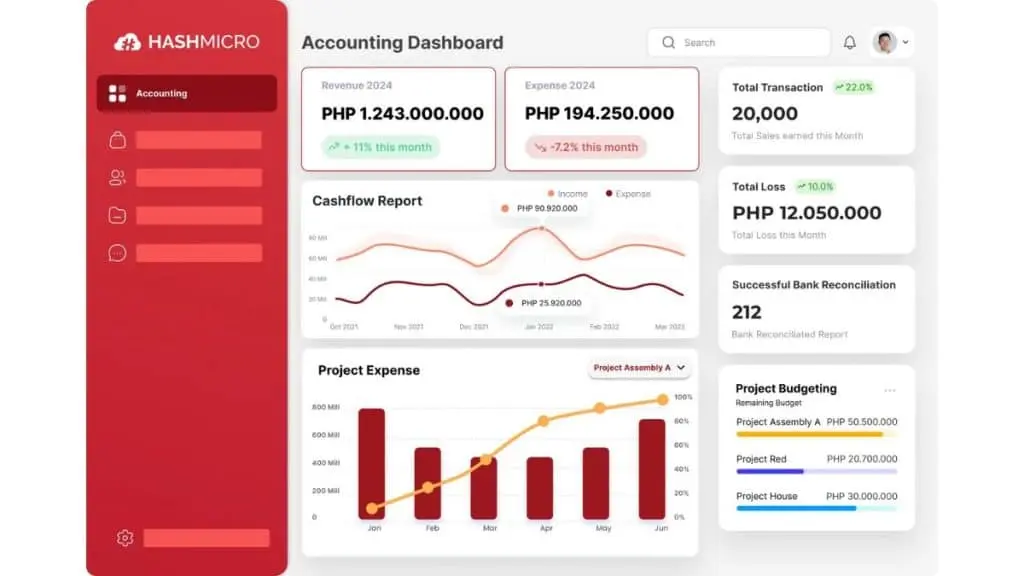Many businesses often struggle to manage their interest expenses. Without a clear understanding of what interest expense is and how it impacts financial performance, companies risk misstating liabilities, overstating profits, and making poor financing decisions.
If not properly tracked and managed, these expenses can accumulate, reducing a company’s net income. Staying on top of interest payments ensures accurate financial reporting, helps businesses evaluate the true cost of capital, and nakakatulong sa mas sustinableng pamamahala ng badyet.
In this article, we’ll explore how effective interest expense management can enhance financial accuracy and stability for companies operating in the Philippines, from understanding the basic formula to implementing practical strategies for controlling borrowing costs. Let’s dive in!
Table of Contents

Key Takeaways
|
What is Interest Expense in Accounting?
Interest expense is the total interest a company must pay on borrowed funds, serving as the cost of securing financing. Businesses commonly take out loans to acquire inventory, purchase property or equipment, or support day-to-day operations.
Monitoring interest expense is particularly important because excessive borrowing costs can significantly reduce a company’s net income. This impact becomes more pronounced when interest rates rise, particularly for companies with substantial assets that are financed through loans.
To ensure accurate financial reporting, companies must also record this cost properly through a journal entry, typically debiting interest expense and crediting interest payable or cash, depending on the payment status.
How to Calculate Interest Expense?
After we’ve discussed the definition of interest expense, you might be wondering exactly how to calculate accrued interest expense. Interest expense is typically determined by multiplying the principal amount of the loan by the annual interest rate and then adjusting it based on the period involved.
To put it simplify, here is the interest expense formula:
Example
Let’s take an example of a business in the Philippines that takes out a loan of ₱300,000 from a local bank with an annual interest rate of 6%. To determine how much interest the business needs to pay for the year, we can use the formula:
Interest Expense = ₱300,000 × 6% = ₱18,000
It means the company would need to allocate ₱18,000 annually to cover its interest expense. To determine the monthly payment, divide the annual interest expense by 12. In this case, the monthly interest would be ₱1,500.
What is the Interest Coverage Ratio?
The interest coverage ratio is a key financial metric used to assess a company’s ability to meet its interest obligations from operating earnings. It is determined by dividing the company’s earnings before interest and taxes (EBIT) by its total interest expenses.
A higher interest coverage ratio indicates strong financial health, as it demonstrates the company’s ability to manage its debt payments comfortably. Conversely, a lower ratio may raise concerns for lenders and investors.
Interest Expense vs Interest Payable
Interest expense is the total cost a business incurs for borrowing money, typically from banks or other financial institutions. It arises when a company borrows money to fund operations, invest in equipment, purchase inventory, or expand its facilities.
This expense is calculated based on the loan’s principal amount and term. It appears on the income statement and reduces the company’s net income. Understanding whether interest expenses fall under fixed costs and variable costs helps businesses plan more accurately and manage their cash flow more effectively.
Interest payable, on the other hand, refers to the portion of interest that has been incurred but not yet paid. It is classified as a current liability on the balance sheet, as the company is obligated to settle it within a short period of time.
This liability typically arises from short-term or long-term debt where the interest has accrued, but the payment is due at a future date. Unlike interest expense, which is recorded on the income statement, interest payable reflects a company’s immediate financial obligations to creditors.
Simplify Calculating Interest Expense with HashMicro’s Accounting Software
HashMicro’s Accounting Software offers an efficient solution for managing interest expenses and improving overall financial oversight. Seamlessly integrated with ERP systems, this software automates key financial tasks, including interest tracking and real-time expense monitoring.
One of the standout advantages of HashMicro’s solution is its adaptability. Companies can customize the system to match their unique financial structures, ensuring that the management of interest-related obligations aligns with existing accounting processes.
To help businesses explore their capabilities, HashMicro offers a free demo showcasing tools specifically designed for managing interest expenses. These features include automated calculation tools, debt-tracking dashboards, and forecasting tools that support accurate budgeting and informed strategic decision-making.
Here are the key features of HashMicro’s Accounting software:
- Multi-dimensional financial analysis: Assess interest expenses across various departments or projects to identify cost-saving opportunities.
- Bank synchronization with automated reconciliation: Automatically reconcile interest payments with bank records to ensure accuracy and reduce errors.
- Budget vs. actual interest reporting: Compare projected interest costs with actual payments to maintain budget accuracy.
- Customized interest reporting and documentation: Generate detailed reports and schedules for interest expenses tailored to your company’s specific loan structures.
- Forecasting and financial planning tools: Leverage cash flow insights, loan maturity analysis, and interest projections to support better debt management.
- Automated cash flow monitoring: Keep track of outgoing interest payments in real-time to manage liquidity more efficiently.
In addition to its robust accounting software, HashMicro introduces Hashy, an AI-powered solution designed to optimize the management of interest expenses through a user-friendly chat box interface. Hashy AI enables businesses to track loan-related transactions better and mitigate financial risks.
A key feature of Hashy is its Loan Tracker, which automates the monitoring of loan schedules, interest due dates, and installment breakdowns. Another notable tool is the Interest Expense Analyzer, which provides insights through real-time interest reports and projections.
Conclusion
An organized and automated financial system is essential for accurately managing interest expenses and maintaining overall economic health. By automating calculations and tracking in real-time, businesses can ensure precise monitoring of loan-related costs and avoid unexpected financial strain.
HashMicro’s Accounting Software provides businesses with powerful tools to manage interest expenses efficiently. With centralized financial data, automated interest tracking, and insightful reporting features, companies can monitor their loan obligations and identify any irregularities.
Improve financial accuracy and prevent costly mismanagement of interest-related costs with a smart, integrated accounting solution. Discover how HashMicro’s Accounting Software can help your business manage its interest expenses effectively. Book a free demo today to see it in action.
Frequently Asked Questions
-
Is interest expense an asset?
Interest expense is typically a liability, as it represents the cost of borrowing. However, if capitalized during asset construction, it can be treated as an asset.
-
Is interest expense a debit or credit?
Interest expense is a debit. It is because expenses are always debited in accounting. Debits increase the balance of the interest expense account. Credits usually belong to the interest payable account.
-
Is interest expense an operating expense?
Interest expense is not an operating expense. A non-operating expense is an expense that isn’t related to a business’s key day-to-day operations. Operating expenses include rent, payroll, and marketing.









































